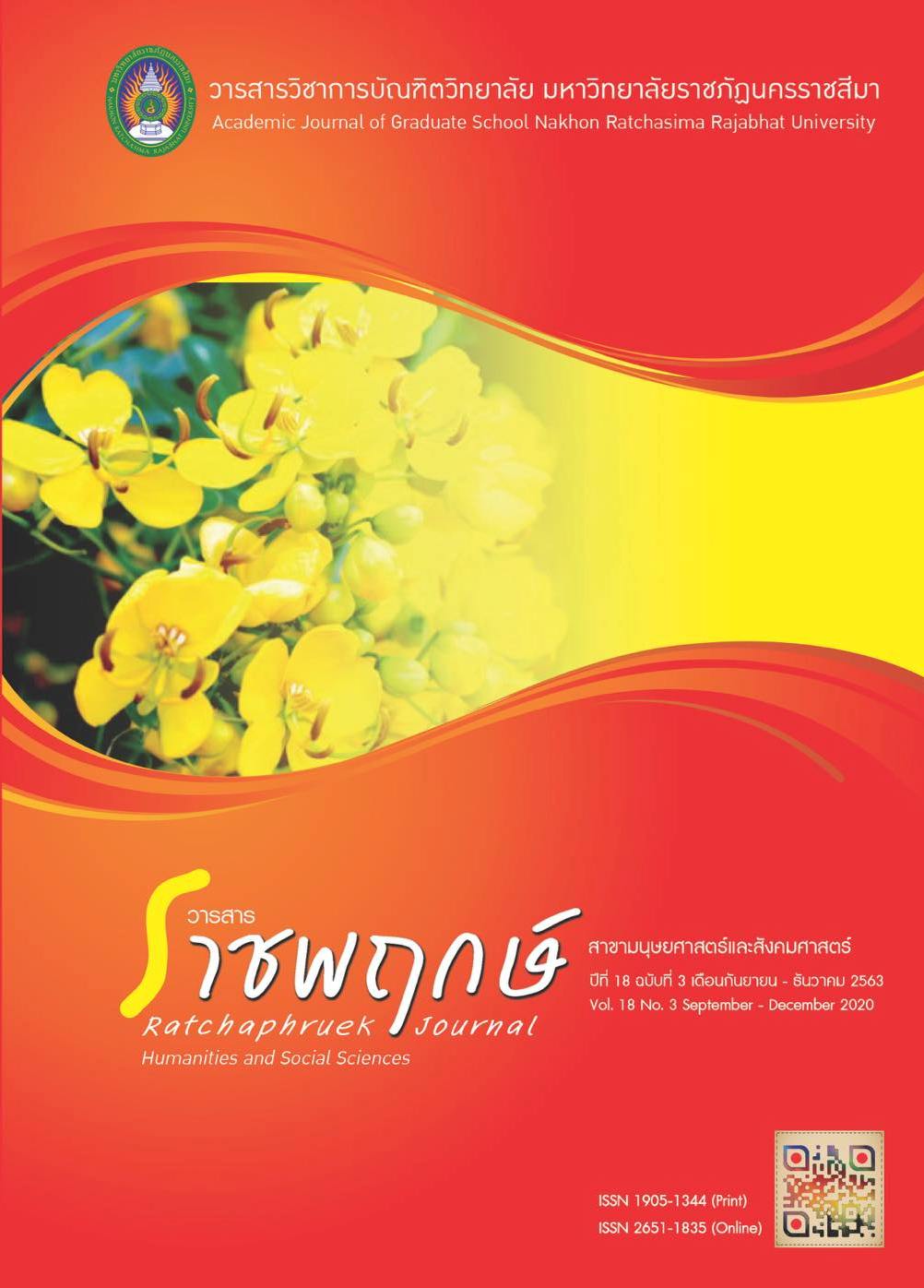The Network Educational Administration Model of School under Nakhon Ratchasima Primary Educational Service Area Office
Main Article Content
Abstract
The purposes of this research were to: 1) Study the problems and needs assessment to the network educational administration of school; 2) to construct the network educational administration model of school; 3) to evaluate the network educational administration model of school under Nakhon Ratchasima Primary Educational Service Area Office. The research process was multiphase mixed method and consisted of four steps: Step 1 studying the network educational administration of school by interview; Step 2 studying the problems and needs assessment of the network educational administration of school by questioner from school administrator; Step 3 constructing the network educational administration model of school Area Office by focus group discussion; Step 4 constructing the manual and evaluate the use of the network educational administration. The instruments used for the research were questionnaire for the network educational administration of school condition and needs questionnaire for the network educational administration of school and suitability assessment form for evaluating that the model was appropriately and useful. The 297 samples were directors from 7 Nakhon Ratchasima Primary Educational Service Area Office, 5 experts form interview for evaluating that the model was appropriately. Data was collected from 9 experts in a focus group discussion. The obtained data were statistically analyzed by using the percentage, mean ( ), standard deviation (S.D.), and the content analyzed. Research results showed that 1) the network educational administration of school is needed among the schools under 7 Nakhon Ratchasima Primary Educational Service Area Offices, 2) the factors of the network educational administration model of school included of 6 elements: Share Vision; Structure and Administrator; communication and Learning Exchange; Innovation and Technology; Interaction, and Successful. 3) the constructed model was evaluated as appropriate, feasible, and useful at the highest level.
Article Details
References
ยงยุทธ ยะบุญธง และชูชีพ พุทธประเสริฐ. (2559). รูปแบบการบริหารภาคีเครือข่ายสถานศึกษาระดับประถมศึกษาที่เป็นเลิศในจังหวัดเชียงใหม่. วารสารมนุษย์ศาสตร์และสังคมศาสตร์, 22(2), น. 64-75.
ยุทธนา คงแหลม. (2559). การศึกษาองค์ประกอบของรูปแบบเครือข่ายความร่วมมือทางวิชาการของสถานศีกษาระดับมัธยมศึกษา. วารสารศึกษาศาสตร์, 27(2), น. 185-196.
สำนักงานคณะกรรมการการศึกษาขั้นพื้นฐาน. (2550). แนวทางกระจายอำนาจการบริหารและการจัดการศึกษาให้คณะกรรมการ สำนักงานเขตพื้นที่การศึกษาและสถานศึกษา. กรุงเทพฯ: สมบูรณ์การเกษตร.
สำนักงานคณะกรรมการการศึกษาขั้นพื้นฐาน. (2561). บันทึกสพฐ. 2561. กรุงเทพฯ: คุรุสภา.
สำนักงานคณะกรรมการการศึกษาแห่งชาติ. (2557). รูปแบบการบริหารจัดการสถานศึกษาขั้นพื้นฐาน. กรุงเทพฯ : พริกหวานกราฟิก.
เสมอ สุวรรณโค. (2558). รูปแบบเครือข่ายการพัฒนาคุณภาพการศึกษาด้านวิชาการของโรงเรียนระดับประถมศึกษา. วารสารวิชาการมศว., ปีที่ 6 ฉบับที่ 2.
James, M., McCormick, R., Black, P., Carmichael, P., Drummond, M. J., Fox, A., … & (2007). Improving Learning How to Learn: Classrooms, schools and networks. Routledge.
Ribchester, C., & Edward, W. J. (2007). Co-operation in the countrysidePrimary School Cluster.http//:llaperwebscohot.com http//:llaperwebscohot.com/lehost/detail/vid=13Ghid=3684 db3b-45f9
Spring, J. (2012). Education networks: Power, wealth cyberspace, and the digital mind. Routledge
Topping, P. A. (2002). Managerial leadership. New York: Mc Graw-Hill.

